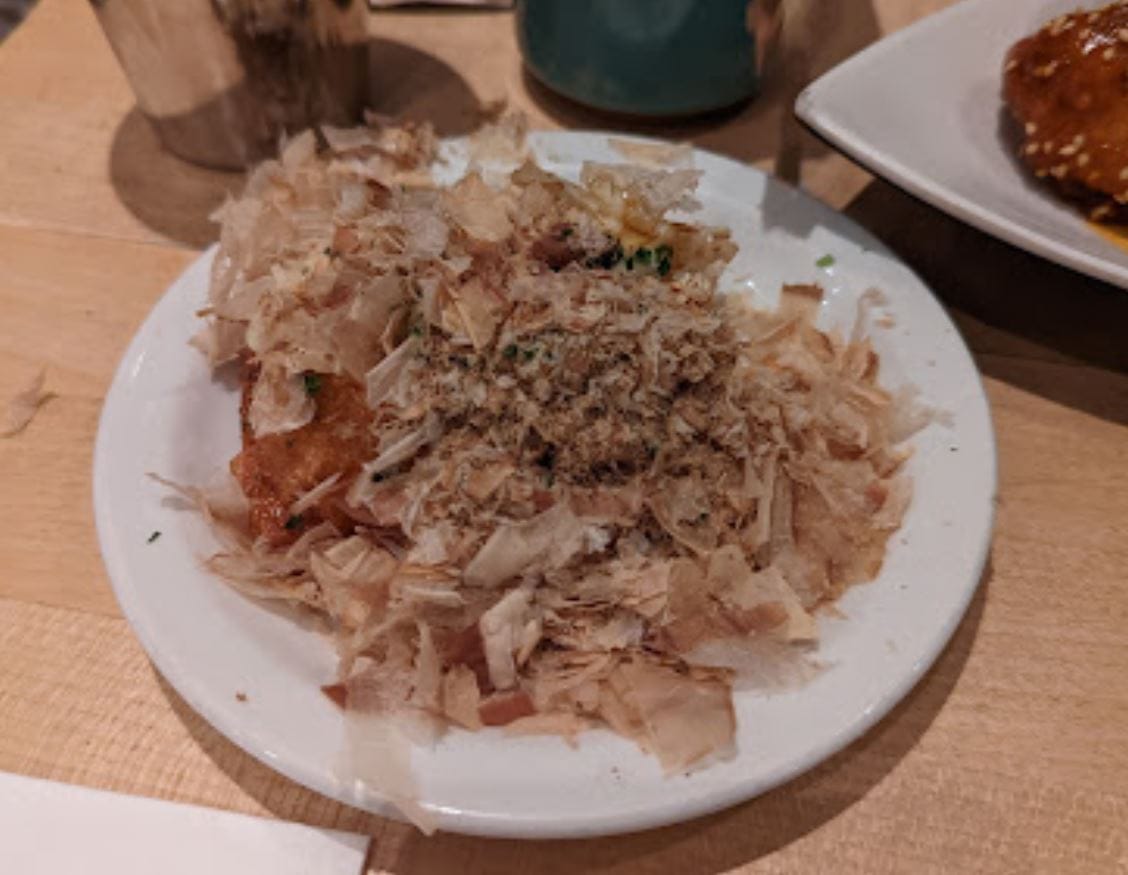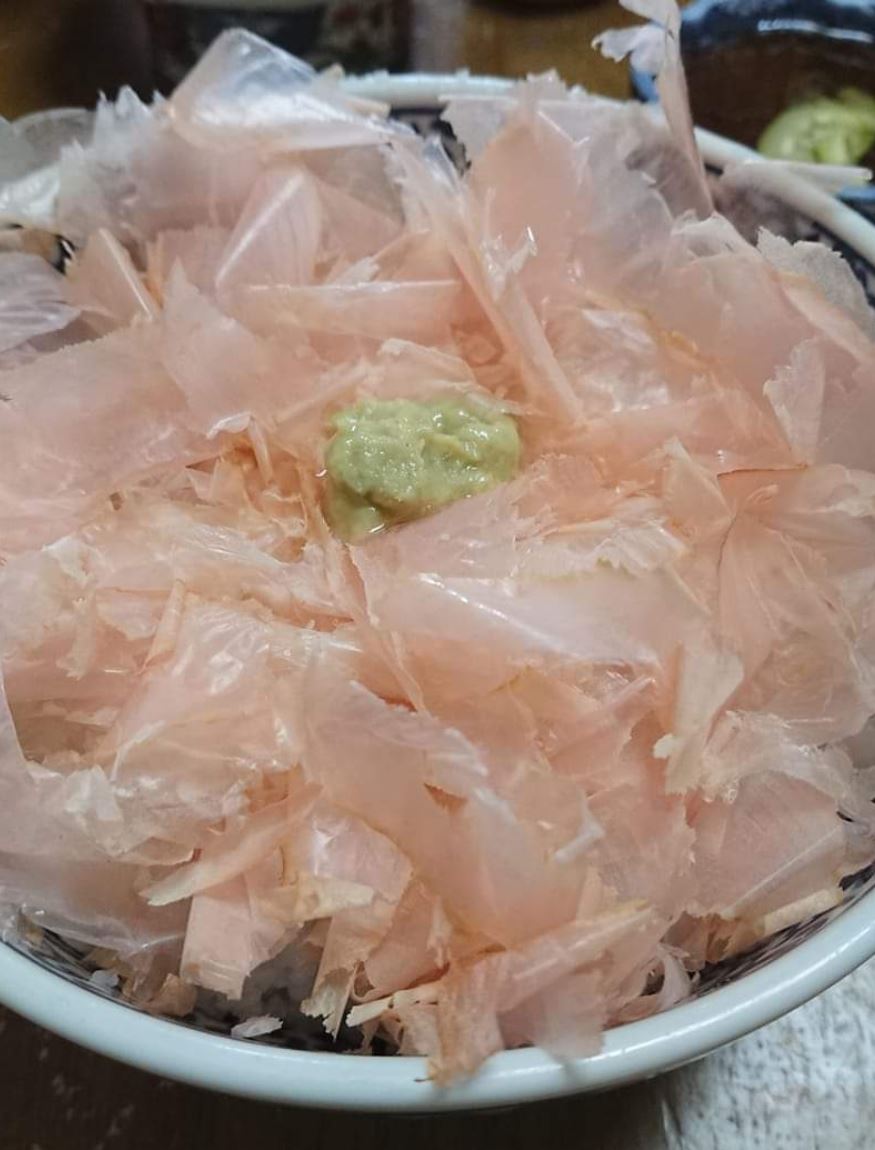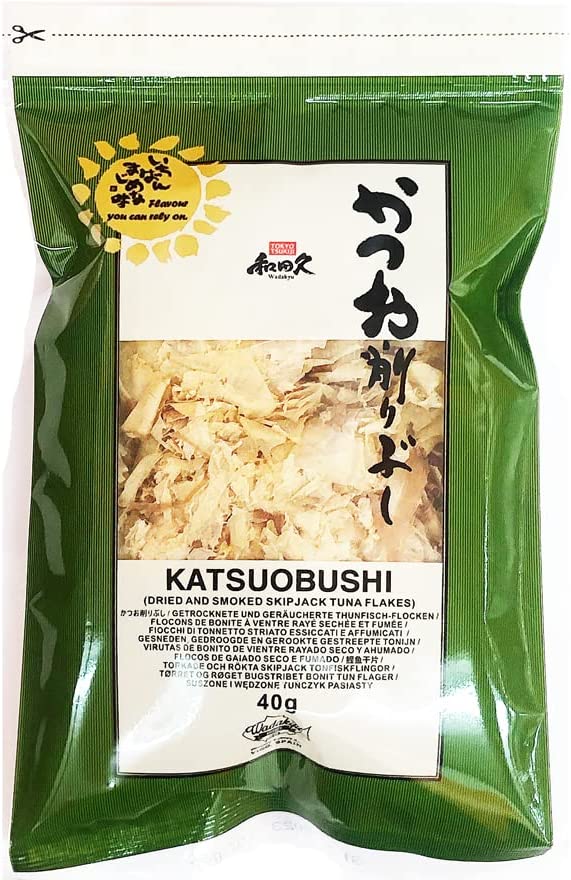What is katsuobushi?
Katsuobushi is a staple of Japanese cuisine. It consists of dried bonito flakes, a variety of tuna. It’s very often used in broths like the famous dashi. Visually, it looks a bit like wood shavings, but don’t be fooled, it’s actually tuna floating in your soup!
What does katsuobushi taste like?

Katsuobushi has a salty and very smoky taste with an obvious flavor that could be described as somewhere between fish and meat. It has a high content of disodium inosinate, a salt sometimes used as an additive, which naturally gives it that famous umami flavor typical of Japanese cuisine.
How to cook with katsuobushi?
It’s often included in all types of broths, but the flagship use of katsuobushi is in dashi soup. Simply drop the flakes into your preparation to instantly rehydrate them! You can already make a dashi soup with just this, but you can also accompany it with other ingredients like kombu, to have a real dashi.
It’s also often found in Japanese rice recipes or salads. Okaka is a rice seasoning made from katsuobushi soaked in sake, soy sauce, mirin and sesame seeds. You can also use the dried flakes as a topping on Japanese savory pancakes, okonomiyaki or even tamago kake gohan. Some people even eat bonito flakes directly from the packet, like chips!

Where to buy katsuobushi?
You can find it in any respectable Asian grocery store. It’s generally sold in the form of dried flakes, but you can also find whole blocks, for example online. Top chefs buy it in this form and grate it using a special tool: the katsuobushi kezuriki.

How to replace katsuobushi?
Couldn’t find katsuobushi? Nothing really replaces the umami taste of bonito… In a dashi, it’s quite difficult to replace. But you can always console yourself by using dried flakes of other fish. As a topping idea, you can also replace it with powdered mackerel or grated nori seaweed.
How to store katsuobushi?
As it’s a dehydrated food, it’s very sensitive to moisture! So store it in a dry, cool place, away from light. The fridge is a good solution. If your packet is open when you store it, make sure to squeeze out all the air and seal it well. If it’s well protected from air, katsuobushi should last between six months and a year. If in doubt, check if its color has changed. If the flakes turn red, it’s often a good indication that they’ve absorbed moisture.

